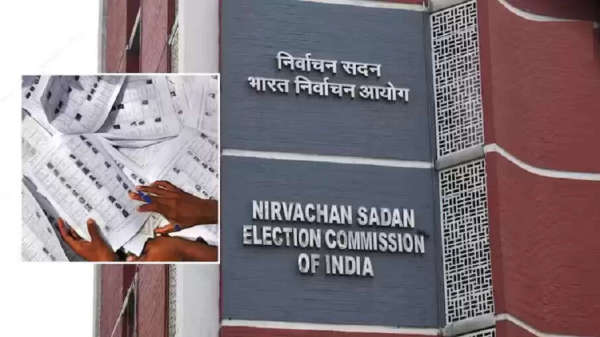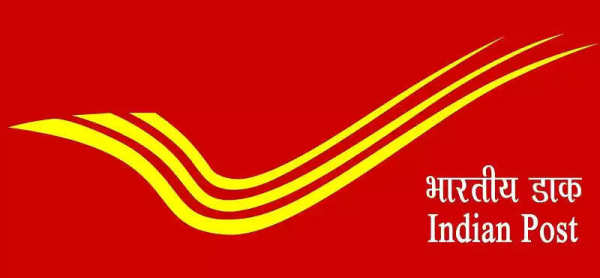Narendra Modi's 2-day visit to Britain to sign the India-Britain FTA starts today. Discussions will take place on the 'next steps' to elevate the comprehensive strategic partnership (CSP) between the two countries. The most significant of these will be on boosting defence industrial cooperation.
Britain's June 2025 Strategic Defence Review emphasises a 'Nato First' but not a 'Nato only' policy. While there is to be no 'tilt' towards the Indo-Pacific, hallmark of the previous Conservative government, the Keir Starmer government seeks to continue to develop the bilateral defence relationship. This is emphasised by the June National Security Strategy that states that 'India is a country with which we seek a genuine strategic partnership, reflecting its growing importance in the international system'.
Bilateral defence cooperation through investments includes next-gen air defence weapons. These include the start of delivery of high-velocity STARStreak very short-range air defence (VSHORAD) missiles and launchers, and collaboration to establish an advanced short-range air-to-air missile (ASRAAM) assembly and testing facility in Hyderabad.
India sources only 3% of its arms and equipment from Britain. The last major British platform sale to India was the second tranche of Hawk advanced jet trainers ($1 bn) 15 years ago, followed by purchase of ASRAAM missiles ($0.4 bn) 11 years ago.
India-UK defence industrial cooperation can be boosted through several changes.
Spanish arm of Airbus has partnered with Tata on the C-295 transport aircraft programme to set up the first private sector final assembly line (FAL) for military aircraft in India. America's General Dynamics and Lockheed Martin, in partnership with Raytheon, are exploring co-production arrangements for the Stryker infantry carrier vehicle (ICV) and Javelin anti-tank guided missile (ATGM), respectively.
France, the US, Russia and Israel have become India's top strategic defence partners as they are willing to share technology and develop local partnerships, something the British government and defence companies have been hesitant to do.
War in Ukraine, and opportunities in other profitable 'low risk' defence markets, have reduced British business appetite to engage with India. Defence companies often view India as a 'high risk' country to do business in. The local defence acquisition policy, DAP 2020, heavily favours procurement from Indian firms. Challenges posed by restricted FDI, high indigenous content and stringent IP requirements often make foreign OEM bids unviable and equal partnerships difficult.
Yet, Sweden's Saab has been granted the first-ever approval for 100% FDI to manufacture the Carl-Gustaf M4 shoulder-fired weapon system. Next-gen India-Britain defence collaboration may involve smaller, deeptech, tier-1 companies.
British defence firms should see India not simply as a market but as a strategic partner in global supply and talent chains. Lockheed Martin plans to set up a maintenance, repair and overhaul (MRO) facility for 12 C-130J transport aircraft operated by IAF. This, along with its existing JV with Tata to manufacture C-130J tail assemblies, positions it favourably for the medium transport aircraft (MTA) programme.
Similarly, France's Dassault recently announced the setting up of an MRO, and has partnered with Tata to produce Rafale fuselages in India, positioning itself well for the multi-role fighter aircraft (MRFA) programme.
Britain could also offer collaboration opportunities that others cannot. The recent announcement permitting foreign defence OEMs to participate in India's 5th-gen advanced medium combat aircraft (Amca) programme alongside Indian partners could be a game changer. Future success requires deepening mutual trust between the two governments, and balancing India's self-reliance goals with Britain's business interests.
Britain's June 2025 Strategic Defence Review emphasises a 'Nato First' but not a 'Nato only' policy. While there is to be no 'tilt' towards the Indo-Pacific, hallmark of the previous Conservative government, the Keir Starmer government seeks to continue to develop the bilateral defence relationship. This is emphasised by the June National Security Strategy that states that 'India is a country with which we seek a genuine strategic partnership, reflecting its growing importance in the international system'.
Bilateral defence cooperation through investments includes next-gen air defence weapons. These include the start of delivery of high-velocity STARStreak very short-range air defence (VSHORAD) missiles and launchers, and collaboration to establish an advanced short-range air-to-air missile (ASRAAM) assembly and testing facility in Hyderabad.
India sources only 3% of its arms and equipment from Britain. The last major British platform sale to India was the second tranche of Hawk advanced jet trainers ($1 bn) 15 years ago, followed by purchase of ASRAAM missiles ($0.4 bn) 11 years ago.
India-UK defence industrial cooperation can be boosted through several changes.
- A bilateral G2G agreement that India favours, but Britain does not have. Recent purchases of French Rafale and Rafale-Marine fighter jets, American M777 ultra-light howitzers and MQ-9B predator drones, Russian S-400 missile defence systems, and Israeli Heron UAVs are all G2G direct imports. French, Russian and Israeli companies have also localised production within a government wraparound, aligning with India's goal of Atmanirbhar Bharat in defence.
- France's Naval Group has built Scorpene submarines at Mazagon docks. Russia's United Aircraft Corporation (UAC) has set up a production line for Sukhoi Su-30 MKI fighter jets at HAL, Bengaluru. Russian BrahMos missile JV and Israeli Barak-8 medium-range surface-to-air missile (MRSAM) partnership exemplify joint development of weapon systems in India. British defence companies are denied these opportunities.
- It is less about platform sales and more about technology transfers (ToT), co-design, co-development and co-production to build long-term indigenous capabilities. France's Safran and HAL are collaborating to co-design and produce new-generation helicopter engines for the Indian multi-role helicopter (IMRH) and deck-based version (DBMRH) for the navy.
Spanish arm of Airbus has partnered with Tata on the C-295 transport aircraft programme to set up the first private sector final assembly line (FAL) for military aircraft in India. America's General Dynamics and Lockheed Martin, in partnership with Raytheon, are exploring co-production arrangements for the Stryker infantry carrier vehicle (ICV) and Javelin anti-tank guided missile (ATGM), respectively.
France, the US, Russia and Israel have become India's top strategic defence partners as they are willing to share technology and develop local partnerships, something the British government and defence companies have been hesitant to do.
War in Ukraine, and opportunities in other profitable 'low risk' defence markets, have reduced British business appetite to engage with India. Defence companies often view India as a 'high risk' country to do business in. The local defence acquisition policy, DAP 2020, heavily favours procurement from Indian firms. Challenges posed by restricted FDI, high indigenous content and stringent IP requirements often make foreign OEM bids unviable and equal partnerships difficult.
Yet, Sweden's Saab has been granted the first-ever approval for 100% FDI to manufacture the Carl-Gustaf M4 shoulder-fired weapon system. Next-gen India-Britain defence collaboration may involve smaller, deeptech, tier-1 companies.
British defence firms should see India not simply as a market but as a strategic partner in global supply and talent chains. Lockheed Martin plans to set up a maintenance, repair and overhaul (MRO) facility for 12 C-130J transport aircraft operated by IAF. This, along with its existing JV with Tata to manufacture C-130J tail assemblies, positions it favourably for the medium transport aircraft (MTA) programme.
Similarly, France's Dassault recently announced the setting up of an MRO, and has partnered with Tata to produce Rafale fuselages in India, positioning itself well for the multi-role fighter aircraft (MRFA) programme.
Britain could also offer collaboration opportunities that others cannot. The recent announcement permitting foreign defence OEMs to participate in India's 5th-gen advanced medium combat aircraft (Amca) programme alongside Indian partners could be a game changer. Future success requires deepening mutual trust between the two governments, and balancing India's self-reliance goals with Britain's business interests.
(Disclaimer: The opinions expressed in this column are that of the writer. The facts and opinions expressed here do not reflect the views of www.economictimes.com.)









Rahul Roy-Chaudhury
Rahul Roy-Chaudhury is senior fellow for South Asia, International Institute for Strategic Studies (IISS), London
Rajiv Roy-Chaudhury
Rajiv Roy-Chaudhury is former strategy director, BAE Systems India